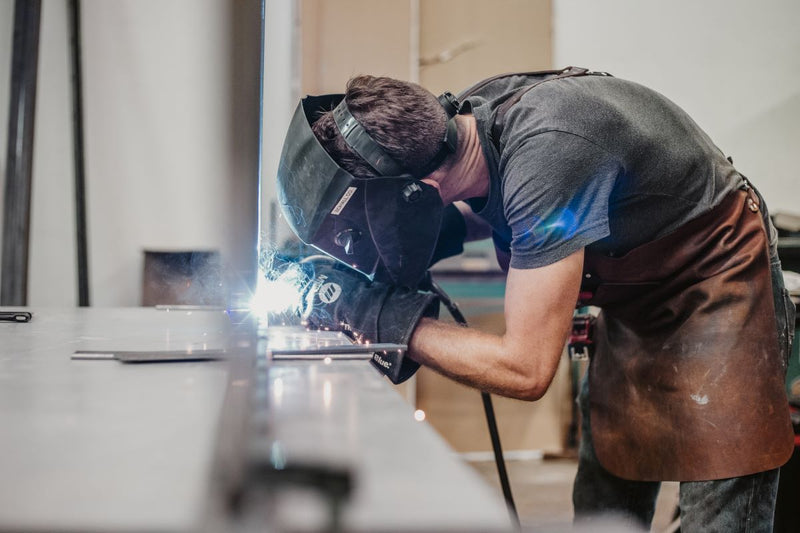Preventing Weld Undercut: Proven Techniques Every Welder Should Know
Preventing Weld Undercut: Proven Techniques Every Welder Should Know
Blog Article
Important Tips for Welders: Protecting Against Undercut Welding and Ensuring Stronger Weld Joints
In the world of welding, achieving durable and solid weld joints is the foundation of creating top notch work. One common obstacle that welders usually run into is undercut welding, which can jeopardize the stability of the weld joint.

Comprehending Undercut Welding
Undercut welding is a typical welding defect that occurs when the weld steel falls short to correctly load the groove and causes a groove-like clinical depression along the weld grain. This flaw weakens the weld joint, making it at risk to cracking and failing under tension. Damaging can be caused by various variables, including excessive welding present, high welding speed, incorrect electrode angle, incorrect electrode size, and bad welding technique.
Among the main factors for undercut welding is an imbalance between the welding existing and the welding rate. If the welding current is expensive or the welding rate is as well quick, the weld metal may not adequately fill up the groove, leading to undercutting. Furthermore, using an electrode that is too big can result in a similar end result, as the excess steel can not properly stream right into the groove.
To stop undercut welding, welders should ensure they are utilizing the proper welding criteria, preserve an ideal electrode angle, select the suitable electrode dimension, and technique correct welding methods. By addressing these elements, welders can minimize the threat of undercutting and produce more powerful, more reliable weld joints.
Proper Welding Method
Reliable welding technique plays an important role in guaranteeing the high quality and integrity of weld joints. One fundamental facet of correct welding method is maintaining the right angle and range in between the welding weapon and the work surface.
Additionally, a steady and consistent hand activity is crucial for producing solid and sturdy weld joints. Welders need to go for smooth, uniform motions to ensure even circulation of the weld material. Correct control of the welding gun and filler material is additionally key to achieving optimum penetration and blend.
Moreover, managing the warmth input and choosing the appropriate welding parameters based upon the product being welded are essential elements in accomplishing high-grade welds - Preventing weld undercut. Welders ought to comply with the suggested settings offered by welding procedure specs and change them as needed based upon the specific needs of the project. By mastering proper welding methods, welders can considerably enhance the stamina and integrity of their weld joints
Picking the Right Electrode
When thinking about the importance of selecting the appropriate electrode in welding applications,Keeping the appropriate angle and distance between the welding weapon and the work surface is basic. The choice of electrode plays a critical function in establishing the top quality and toughness of the weld joint. Electrodes are available in various types, each made for certain objectives and products.
Firstly, selecting the ideal electrode diameter is important. Thinner electrodes appropriate for welding thin materials, while thicker electrodes are better for thicker materials and higher heat applications. Matching the electrode diameter to the thickness of the work surface aids attain a well balanced weld.
Second of all, understanding the material composition of the electrode is essential. Different electrodes are made for welding details materials like steel, stainless steel, light weight aluminum, or cast iron. Using the correct electrode material guarantees great combination and decreases the threat of issues in the weld.
Lastly, considering the welding position and technique is essential when selecting the electrode type. For example, certain electrodes are better fit for above or vertical welding placements, while others function well for flat or horizontal positions. Choosing the best electrode based on the welding strategy improves the general weld quality and integrity.
Preparing the Base Steel
To make sure a successful welding procedure, what initial actions should be taken when preparing the base metal for welding? In addition, any kind of existing weld material or deposit from previous welding should be gotten rid of to ensure a tidy surface area for the new weld.

Conducting Post-Weld Assessments
After carrying out these evaluations, welders have to compare the results against market requirements and task needs to ensure that the read the full info here weld joint meets all needed requirements. Any type of deviations or inadequacies discovered during the post-weld assessment must be immediately dealt with with proper restorative procedures to ensure the weld's stability. By carefully doing post-weld assessments and immediately resolving any kind of concerns, welders can maintain the high quality and dependability of their work, ultimately adding to the safety and longevity of the bonded frameworks.
Conclusion

Finally, preventing undercut welding and making certain more powerful weld joints require a mix of appropriate welding technique, choosing the appropriate electrode, preparing the base metal correctly, and performing post-weld assessments. By understanding the reasons Click This Link of undercut welding and carrying out the required precautions, welders can generate premium weld joints that meet sector requirements and make certain the architectural integrity of the bonded components.
Undercut welding is an usual welding problem that takes place when the weld metal falls short to correctly load the groove and results in a groove-like anxiety along the weld grain (Preventing weld undercut). Undercutting can be created by various variables, including extreme welding present, high welding speed, incorrect visit this website electrode angle, incorrect electrode size, and inadequate welding technique
One of the primary factors for undercut welding is an imbalance in between the welding present and the welding rate. If the welding current is too high or the welding rate is also fast, the weld metal might not properly fill up the groove, leading to undercutting.Preserving the right angle and range between the welding gun and the work surface is essential when considering the value of choosing the best electrode in welding applications.
Report this page